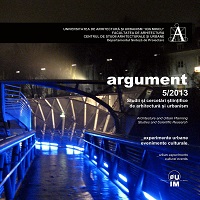BUCUREŞTI – NOUL AUTISM CROMATIC
BUCHAREST – THE NEW CHROMATIC AUTISM
Author(s): Letiţia BărbuicăContributor(s): Dana Radler (Translator)
Subject(s): Architecture, Rural and urban sociology
Published by: Editura Universitară “Ion Mincu”
Keywords: Bucharest; color; modernism; kitsch; grey; urban regulation;
Summary/Abstract: This paper will debate the situation of the colours on buildings in Bucharest. It is bad that the city is grey. It is even worse that is meaningless coloured up. What would be a mid-way solution and what could be done. We could say that, although some styles ignore colour, others are unified by very strict rules regarding the colours: white for modernism and its followers, primary colours for De Stijl and Bauhaus, natural colours for Post-modernism, „colourless colours” - for Minimalism. A brief review of the relationship between colour and architecture, in the last hundred years, helps us to analyse where we could place the architecture of Bucharest, in this regard. Bucharest was and still is grey, but a kind of grey that is not a colour. Grey is the sign of urban poverty, as valuable buildings were ignored, fallen into decay and wear through the communist period, in which all the energy was direct towards building blocks of flats. And, as an irony of fate, these block of flats buildings were to be , in turn, abandoned to decay and wear and would gradually turn into grey architecture. At the beginning of the years 2000 we could say for certain that Bucharest was a GREY city. So the idea of renovating these buildings seems like a very good one. I will analyse the colour solutions that were proposed for the public spaces following the collective residential buildings thermal insulation program started by Bucharest municipality. Bucharest goes form grey to colour cacophony. The paper presents a possible strategy to eliminate chromatic cacophony in thermal rehabilitation projects, a solution for collective housing renovation in down town Câmpina, a parallel study conducted for the design contest – The Architectural Competition for Upgrading and Rehabilitation of the Central Area of the City Campina, Boulevard Carol I, for where we were granted with the third prize.
Journal: Argument
- Issue Year: 2013
- Issue No: 5
- Page Range: 235-250
- Page Count: 16
- Language: English, Romanian

